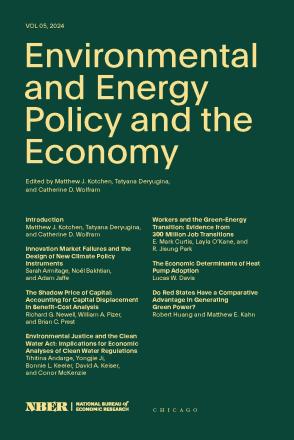Workers and the Green-Energy Transition: Evidence from 300 Million Job Transitions

Using microdata representing over 130 million online work profiles, we explore transitions into and out of jobs most likely to be affected by a transition away from carbon-intensive production technologies. Exploiting detailed textual data on job title, firm name, occupation, and industry to focus on workers employed in carbon-intensive (“dirty”) and non-carbon-intensive ("green”) jobs, we find that the rate of transition from dirty to green jobs is rising rapidly, increasing ten-fold over the period 2005-2021 including a significant uptick in EV-related jobs in recent years. Overall however, fewer than 1 percent of all workers who leave a dirty job appear to transition to a green job. We find that the persistence of employment within dirty industries varies enormously across local labor markets; in some states, over half of all transitions out of dirty jobs are into other dirty jobs. Older workers and those without a college education appear less likely to make transitions to green jobs, and more likely to transition to other dirty jobs, other jobs, or non-employment. When accounting for the fact that green jobs tend to have later start dates, it appears that green and dirty jobs have roughly comparable job durations.
-
-
Copy CitationE. Mark Curtis, Layla O'Kane, and R. Jisung Park, Environmental and Energy Policy and the Economy, volume 5 (University of Chicago Press, 2023), chap. 4, https://www.nber.org/books-and-chapters/environmental-and-energy-policy-and-economy-volume-5/workers-and-green-energy-transition-evidence-300-million-job-transitions.Download Citation


